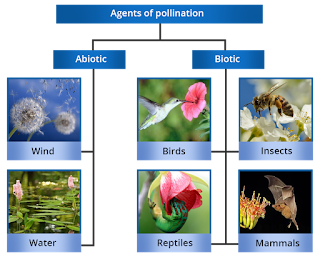Last Sunday, my brother and I were enjoying our leisure time reading books in our garden. Mom has planted so many beautiful plants with different coloured flowers. I got distracted by the buzzing of a honeybee. My instant reaction was to shoo it away. But my brother asked not to do so and we sat there observing the honeybee.
Honeybees look quite magnificent with their black and bright yellow colours. We watched that honeybee move from one flower to another buzzing lightly while doing so. My brother told me that the buzzing sound is because of their wings, which are smaller than their body. Due to this, they must flap their wings more frequently to fly.
Honeybees look quite magnificent with their black and bright yellow colours. We watched that honeybee move from one flower to another buzzing lightly while doing so. My brother told me that the buzzing sound is because of their wings, which are smaller than their body. Due to this, they must flap their wings more frequently to fly.
He also told me many other fun facts about honeybees. Did you know that they are social insects, i.e. they live in colonies? They also have job segregation. Worker bees build hives and collect nectar, a single queen bee rules the hive, etc. They also communicate with each other via dance. But the fact which fascinated me the most was their role in the process of pollination.
We had studied in school that pollination is important for plants to reproduce. I decided to make pollination as my Sunday project and dived into gathering more information.
So, to understand the process of pollination, we must first understand the parts of a flower. I found that, in a bisexual flower, both male and female parts are present, e.g. hibiscus flower.
The male part consists of anthers and filaments. The anther contains pollen sacs which are full of pollen grains. Pollen grains come in various shapes and sizes. The female part of a flower consists of a stigma, style, and an ovary. Stigma is soft like a cushion and slightly sticky. Pollens are transferred to the stigma part of a flower. From the stigma, pollen travels to the ovary by forming a pollen tube and this leads to the formation of seeds and fruits.
Now you must be wondering, how is this related to pollination? Well, unless pollen reaches a stigma, none of the later stages of seeds and fruits formation can occur. This is where pollinators (pollen carriers) play a major role. Honeybees are not the only pollinators though. There are various agents of pollination.
Honeybees are one of the biotic agents of the pollination process. Honeybees fly from one flower to another to collect nectar, which is converted into honey by enzymatic reactions. When honeybees feed on a flower, pollen grains stick to their legs and body. When they move to another flower, they carry those pollen to the stigma. This is the process of pollination.
Pollination is of two types, self-pollination and cross-pollination.
Self-pollination is when pollination occurs by pollens produced by the same flower or another flower of the same plant.
Cross-pollination is when pollination occurs by pollens produced by another flower of the same species or different species.
Self-pollination reduces the chance factor of pollination, thereby ensuring seed and fruit production. It also maintains a pure line of genes. On the other hand, seed production in cross-pollination is less probable. However, by cross-pollination, new and better genes may get introduced which may provide evolutionary benefit to the plant. Thus, both types of pollinations are equally important.
It is important to protect pollinators, as approximately one-third of our agriculture is dependent on pollination by biotic pollinators. Pesticides, fertilizers, and increasing pollution are endangering pollinators like honeybees. We need to protect these tiny workers who help us in growing food. We can do so by reducing the use of chemicals in agriculture, reducing air pollution, practising traditional methods of agriculture, and improving bee husbandry.
So, the next time you see honeybees in your garden, instead of killing or shooing them away, you should thank them. But make sure you maintain sufficient distance because they can sting if they feel that they are in danger.
There are many more interesting facts about honeybees, like how and when do they know to dance? Why does a honeybee die after stinging someone? How exactly is nectar converted to honey? Maybe I will explore these questions in my next project.
Akshara is an exam oriented app for CBSE X grade, Karnataka SSLC, and BSc Nursing. Akshara helps you learn methodically and use modern techniques like Flashcards, which makes the content easy to memorize. The app runs on android mobile and tablets.
visit this link to download two free chapters. For any queries visit us on https://www.aksharaontech.com









No comments:
Post a Comment